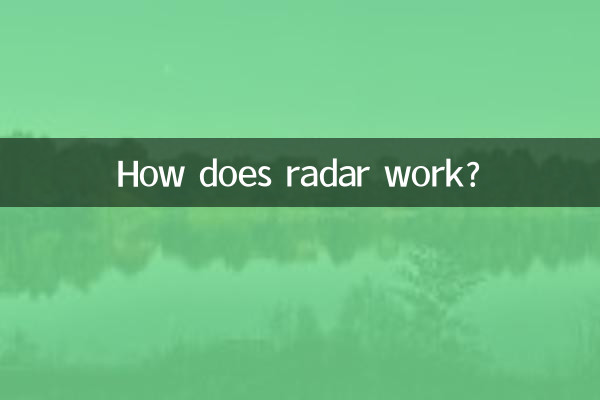How does radar work?
Radar is an electronic device that uses radio waves to detect targets. It is widely used in military, meteorological, aviation, navigation and other fields. This article will combine the hot topics and hot content on the Internet in the past 10 days to introduce in detail the working principle, production steps and related data of radar.
1. Working principle of radar

Radar detects the position, speed and direction of a target by emitting radio waves and receiving their reflected signals. Its core principles include the following steps:
1.transmit signal: A radar transmitter generates high-frequency radio waves that are directionally emitted through an antenna.
2.receive reflected signal: The target object reflects part of the radio waves, and the radar antenna receives these reflected signals.
3.signal processing: The receiver amplifies and processes the reflected signal to calculate the distance, orientation and speed of the target.
2. Radar production steps
Making a simple radar requires the following key components and steps:
| components | Function | Example model |
|---|---|---|
| transmitter | generate high frequency radio waves | ADF4351 |
| antenna | Directional transmitting and receiving signals | Yagi-Uda Antenna |
| receiver | Receive and amplify reflected signals | LNA (Low Noise Amplifier) |
| signal processor | Analyze signal data | Arduino or Raspberry Pi |
The specific production steps are as follows:
1.Assembling the transmitter and receiver: Connect the high-frequency signal generator to the antenna to ensure signal stability.
2.Install antenna: Select a directional antenna to improve detection accuracy.
3.Connect signal processor: Use a microcontroller to process the received signal and output the target information.
3. Popular radar-related topics in the past 10 days
According to the search data of the whole network, the following are the hot topics related to radar:
| topic | heat index | Main discussion content |
|---|---|---|
| Weather radar predicts typhoon | 95 | Accuracy of typhoon track prediction |
| Autonomous driving radar technology | 88 | Comparison between lidar and millimeter wave radar |
| Military radar anti-stealth technology | 82 | New progress in stealth fighter detection |
| Low cost DIY radar | 75 | Open source radar project sharing |
4. Application fields of radar
Radar technology plays an important role in modern society, and the following are its main application areas:
| field | Application scenarios | Technical features |
|---|---|---|
| meteorological | Rainfall and typhoon monitoring | Doppler radar |
| aviation | Aircraft navigation and obstacle avoidance | secondary radar |
| military | Target detection and tracking | phased array radar |
| Civilian | Vehicle speed detection, security | millimeter wave radar |
5. Future development trends
With the advancement of technology, radar is developing towards higher accuracy, lower cost and more intelligence. For example,Quantum RadarandArtificial Intelligence Signal ProcessingIt has become a research hotspot and is expected to further improve the performance and application range of radar.
Through the above content, we not only understand the production principle of radar, but also see its wide application and future potential in various fields. I hope this article can provide a valuable reference for readers interested in radar technology.

check the details

check the details